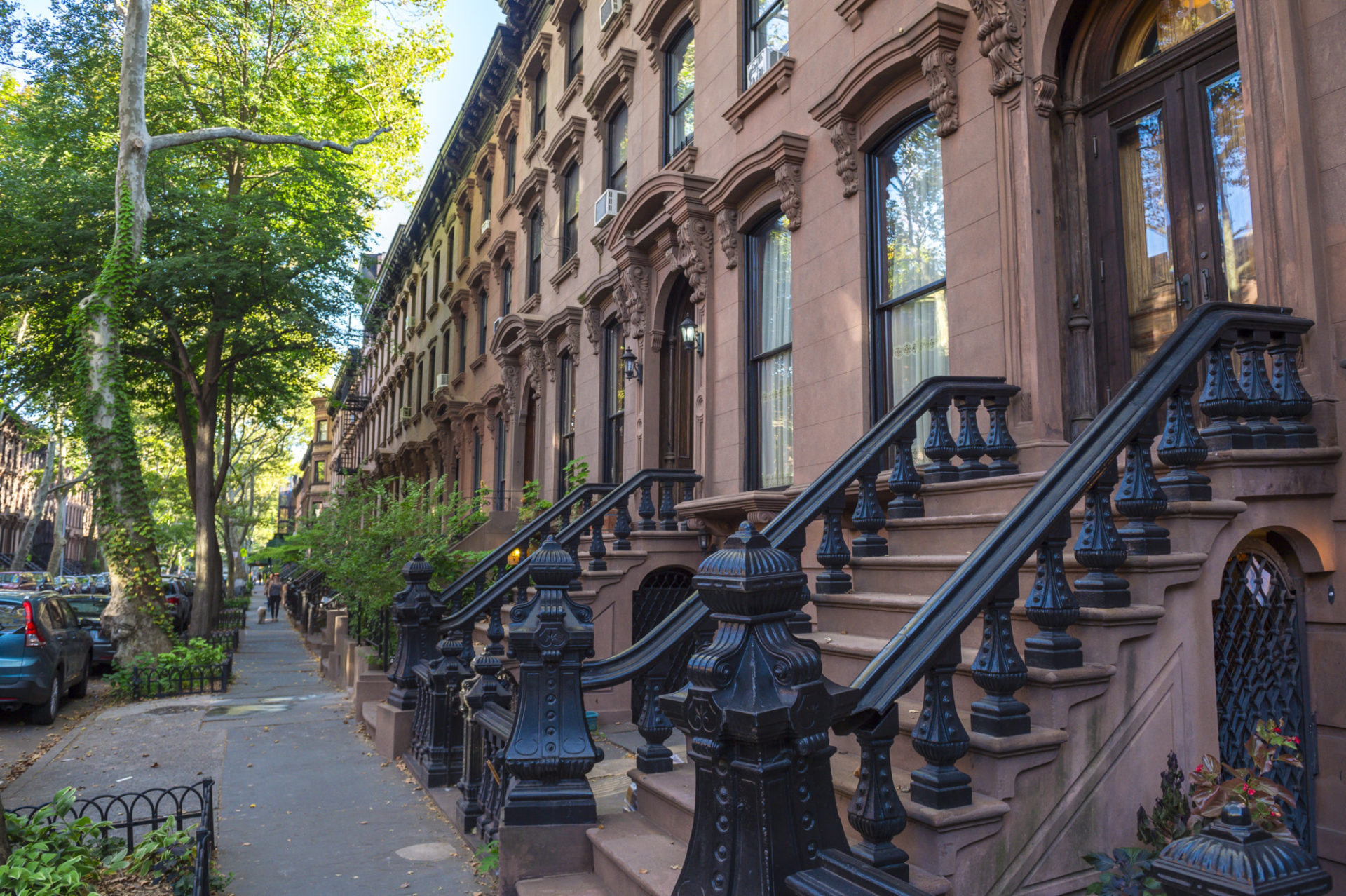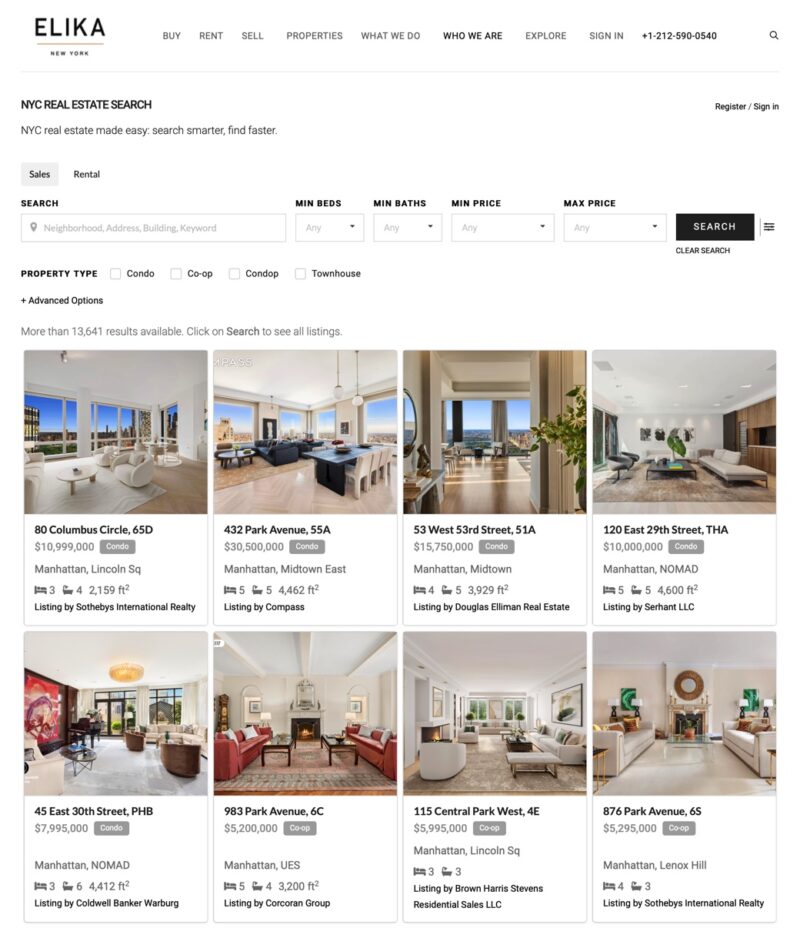Table of Contents Show
There’s nothing else out there like a brownstone when it comes to New York City real estate. Despite their high costs and renovation difficulties, they’re still arguably the most coveted real estate in the whole of NYC. One reason they’re so desirable is that they’re infinitely customizable. Unlike co-ops, condos, or regular apartments, brownstones can be adjusted when needed to suit your individual needs as they change over your lifetime. It makes them perfect for people looking for a home to spend their golden years in. Let’s not forget the beautiful ornate architectural details so many come with that you won’t find anywhere else. Lastly, there’s the advantage of all the space they provide in an otherwise crowded city. Whatever your reasons for wanting a brownstone are, they’re sure to meet and exceed those needs and wants.
Brownstone renovations can be highly time-consuming and require a large budget. But with that said, they also present significant challenges. Mainly that many are sold as-is and need extensive renovations. Whether you’re already about to close on your new brownstone or still on the fence about buying and renovating one, this complete guide will give you a picture of what lies ahead.
Considerations When Renovating a BrownstoneConsiderations When Renovating a Brownstone
Even if you’re only vaguely familiar with NYC brownstones, you’ll at least know they don’t make buildings like these anymore. Many brownstones are over 100 years old and will have to be modernized if they’re to suit a 21st-century family’s needs. Of course, the cost of these renovations will be the first thing that comes to your mind. But before we get to that, here are some things to consider before starting a brownstone renovation project.
It may take some time.It may take some time.
Anyone jumping into a brownstone renovation needs to understand the time commitment they require entirely. A significant project like this is a bit like climbing a mountain. You have to plan and prepare for several months before you can start. Then, once you start, it’s an uphill battle that can test even a saint’s patience. If you plan to also live there through the renovation, expect some stressful times. Acknowledging this ahead of time will make the eventual climb much easier.
If you’re going for a complete gut renovation, you should expect it to take at least a year, probably more. On average, the design phase can take about four months. You’ll work closely with your architect to assess your priorities, draw up plans, and submit them for approval. Coding violations or landmark issues can slow this down. Once the work is ready to begin, it can take another eight months, depending on the project’s scale. Please talk about this with your architect to assess how long it will take. Expect delays and a few road bumps along the way.
You’ll need time to get used to brownstone living.You’ll need time to get used to brownstone living.
Many homeowners new to brownstone living require some time to get used to it. If you’re moving from a small apartment, then the level of space you’ll gain can be a bit overwhelming at first. In particular, families often feel it’s too luxurious to have a whole floor assigned to each family member. Then there’s the long-ingrained New Yorker habit of feeling like every room and bit of space needs to have a specific purpose.
Don’t worry; in time, you’ll get used to your new living arrangement and find out how to best use all the space you now have. Be sure to have a long talk with your architect about your plans and how you intend to utilize the space. They can help you develop a design that provides both functionality and comfort. Preserving the unique architectural details is why it’s best not to rush the design phase, as your goals and expectations may change.
You may have to make compromises.You may have to make compromises.
It’s sporadic for any renovation to go exactly as planned and meet all your needs. Your architect will help you decide on what you should prioritize and what you can compromise on. It might make some hard decisions, but if you’re not willing to stay flexible, the project will never get finished. This potentially means limiting what areas you’re heavily renovating to save on budget. It might mean sacrificing some beautiful original details like that millwork that first caught your eye. Whatever it is, be open to suggestions. If something is essential to you, your architect and contractors will try to save it. But if it’s not, some things will have to be sacrificed for convenience, functionality, or budget.
Working with an ArchitectWorking with an Architect
Renovating a brownstone is a huge undertaking and one that will require an experienced architect’s services if it’s to go well. Architects are trained to think about how you can best utilize a room and building, and by involving one early, you can avoid costly missteps.
How to choose an architectHow to choose an architect
Choosing an architect is much like selecting a buyer’s agent. Each one will be different, so you’ll want to find qualified and have experience working with brownstones. You’ll also want to choose someone you can get along with quickly. You’ll be working closely with this person for some time, so find one you feel comfortable with and can get along with.
If you haven’t bought the home yet, you should schedule a site evaluation with your architect. They can provide invaluable insight into potential problems with renovations and point out their potential. This will also allow you to see how your working relationship will go. Do they listen to you and understand your vision for the home? If so, then you might have the right person for the job. This job requires a massive team effort, so do your due diligence on finding the right architect.
Getting approval and complianceGetting approval and compliance
Another strong argument for hiring an architect is that they’ll be well-versed in the complex world of NYC compliance. Permits, meetings, and walkthroughs will have to be obtained from the municipal board and landmark board—all of which your architect can handle. Depending on the district and the work scope, landmarks approval may require staff-level approval and add only one or two weeks to your project schedule. But in the event of extensive exterior work, you may need the community board and Landmarks Preservation Commission’s approval. Permits like this can take as many as six months to be granted.
Fortunately, there is at least one significant advantage to renovating a brownstone compared with other building types. So long as the home meets all the building codes and zoning restrictions, you are free to approach the project; however, you wish. No co-op or condo rules will limit what you can do.
Working through design and constructionWorking through design and construction
As you work with your architect through the design and construction phase, it’s essential that you balance your needs and wants. Brownstones come with many infrastructure issues that must be brought up to code. The most common problem areas are outdated electrical wiring, decrepit plumbing, and roofing maintenance. Other issues may pop up over time, but these are the main areas to look at first.
Changes in living expectations are another issue. Being old brownstones typically requires radical changes in design to accommodate modern needs. For example, the kitchen was more of a utilitarian afterthought in previous years. Nowadays, it’s usually the heart of the home. By working closely with your architect and giving them a picture of how you want to live, they can help you craft a design that balances the old and new.
Deciding on a budgetDeciding on a budget
Regarding budget (more on that below), try to get on the same page with your architect. Brownstone renovations can be enormous projects with many things to consider. Your highest cost will be labor, so the more you can limit a project’s scope, the more you can cut back on costs. Many homeowners think they can keep costs down by selecting lower-quality finishes and appliances. The problem with this approach is that the savings you’ll make are only marginal. A far better way to keep costs down is to limit the square footage you’re renovating. This could be just a few cosmetic details you choose to forgo or an entire floor you can deal with later.
How Much Will a Brownstone Renovation Cost?How Much Will a Brownstone Renovation Cost?
Now we come to the most painful question, how much will all of this cost? Renovating a brownstone is one of those things that can make a designer handbag habit or regular meals in a three-star restaurant look cheap by comparison. Every project is different, and much will depend on your location and the project’s scope. Nevertheless, here are some ballpoint figures of what you can expect to pay for a 3000 square foot house.
Average Breakdown of Price per Square FootAverage Breakdown of Price per Square Foot
- Full Brownstone Renovation: $200-$300 PSF
- Dry Spaces: $30-$50 PSF
- Wet Spaces: Baths start at $400 PSF, and Kitchens start at $300 PSF
Heating, Cooling, and PlumbingHeating, Cooling, and Plumbing
- Plumbing Permits: $2000-$3000
- Full Plumbing Upgrade: $50,000
- Replace Boiler: $400-$7000
Electrical WorkElectrical Work
- Electrical, Per Point: $250
- Install Light Fixture: $40
- Full Electrical Upgrade: $12,000-$30,000
Structural and Exterior WorkStructural and Exterior Work
- Redo Outside Cement Patio: $2,000
- Brownstone Resurfacing: $70,000 and up
- Reline a Chimney: $2,500-$5,000
Interior WorkInterior Work
- Refinish floors: $1.50-$3 PSF, depending on the job size and other factors such as seal/stain.
- Skim coating plaster walls: $3 PSF
- Stripping woodwork $25 per hour
- Finish carpentry: $40 and up per hour
- Painting: $1-$3 PSF: varies by the job size, prep, number of coats, trim, etc.
- Bathroom Renovation: $7,000 to $30,000 to $100,000 and up, varying with the size of the bathroom, cost of materials, and whether you’re moving plumbing or rebuilding floor support
- Kitchen renovation: $12,000 to $40,000 to $100,000 and up, depending on the size of the kitchen, cost of materials and appliances, the linear footage of cabinetry and counters, and whether you’re moving plumbing and walls
These numbers are rough estimates, but they should give you some sense of the costs involved in a renovation. The main impact on price is scope. Infrastructure will be the most significant expense, followed by other significant HVAC, electrical, flooring, and roof components. Making use of less expensive materials will only give you marginal savings.
You won’t know the expected costs until you’ve settled on a final plan with your architect and contractors. If you’ve chosen a good team, they’ll know what suggestions to make to help you cut costs. Whatever number they finally give you, make sure you have another 10-15% of that as a cushion. Renovation projects almost always encounter unexpected expenses, so it’s better to be prepared. Final costs can range from $300,000 to $1 million.
Tips on How to Budget Your Renovation Tips on How to Budget Your Renovation
Mix high and lowMix high and low
When choosing materials, try to juggle between high-and low-end quality. Choosing a high-quality tile backsplash is fine, just so long as you balance that cost with an off-the-shelf option for the second bath. Put high-quality finishes on things that people are likely to notice. Save your money on those parts that visitors are less likely to see.
Don’t go cheap on plumbing and electrical.Don’t go cheap on plumbing and electrical.
Visitors won’t be able to admire the quality of your plumbing and electrical circuits. But these parts will still need licensed and experienced contractors to do the job right. If you try to cheapen out in this department, it will cost you far more in the long run.
Put your money into the kitchen and bathrooms.Put your money into the kitchen and bathrooms.
If you ever choose to resell, these areas will push up your home’s value. Not to mention, these are also the areas that will garner the most compliments from guests.
The End ResultThe End Result
Whatever your final vision is, don’t expect it to turn out exactly as you hoped. Unexpected problems can emerge, which will change the final plan. Going too over budget might mean having to forgo particular renovations later. But by involving an architect as early as possible in the process, you can avoid the most significant problems and still turn out with an impressive renovation in line with what you had in mind. It’s been a long journey, but you can reach the top of the mountain by knowing what’s ahead and putting as much time into the planning and design phase.








